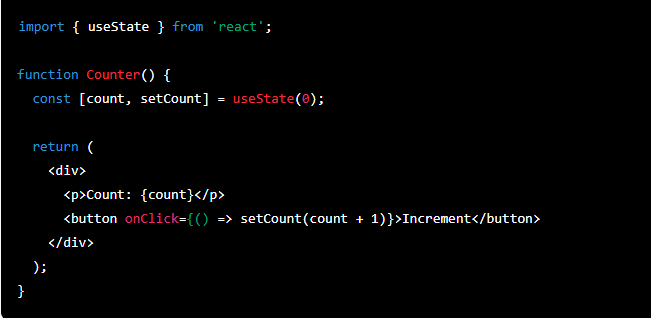

A hook in React is a function that allows you to use state and other React features in functional components. This means that instead of having to use class components, you can use functional components with hooks to manage state and perform other actions.
One of the most commonly used hooks is the useState hook. This hook allows you to add state to a functional component. For example, you can use the useState hook to keep track of a count in your component:

In this example, the useState hook is used to create a state variable called "count" with an initial value of 0. The hook returns an array with two values - the current value of the state and a function to update the state. In this example, the "setCount" function is used to increment the count when the button is clicked.
Another commonly used hook is the useEffect hook. This hook allows you to run side effects in functional components, such as fetching data or setting up a subscription. For example, you can use the useEffect hook to fetch data from an API:
In this example, the useEffect hook is used to fetch data from an API when the component is rendered. The hook takes two arguments - a function that contains the side effect and a list of dependencies. In this example, the effect is to fetch data and the dependency is an empty array, which means that the effect will only run once when the component is rendered.
Hooks are a powerful feature of React that allows you to write functional components with state and other features. They are easy to use and understand, and they make your code more readable and maintainable.